Abandoned History: General Motors' Turbo-Hydramatic Transmissions (Part II)

Our Abandoned History coverage of the Turbo-Hydramatic transmission series continues today. The THM was a singular solution to two different automatic transmissions in use by Oldsmobile, Cadillac, and Buick in 1963. Turbo-Hydramatic arrived at a time of modernization for the automatic, which prior to the mid-Sixties was regarded as inefficient and less than smooth.
The THM400 was the 1964 replacement for the Hydra-Matic and Buick’s Dynaflow and established itself as a smooth and reliable gearbox. It proved useful in a variety of luxury and heavy-duty applications and shrugged off weight and torque easily. In short order, it took off as the transmission of choice for various small manufacturers outside of GM. However, no matter how excellent the THM400 was, it found itself squeezed by a drive toward greater fuel efficiency. It was also a bit hefty to be of broad use in smaller or lighter passenger cars. GM needed more Turbo-Hydramatics!
It wasn’t too long before the Turbo-Hydramatic line expanded. In 1969 a new version appeared, the THM350. The three-speed was developed specifically to take over for two older GM gearboxes. First was the Super Turbine 300, a two-speed that was found in Buick, Pontiac, and Oldsmobile models from 1964 to 1969. Each company had its own marketing name, but the Super Turbine underneath was always the same.
The THM350 also replaced the Powerglide, another two-speed automatic. Found primarily on Chevrolet vehicles, the Powerglide continued life for a few more years after it ceded most of its duties to the 350. It remained in production through 1973. Even though the new 350 wore fancy Turbo-Hydramatic branding, it was actually developed by the engineers devoted to Powerglide. The THM350 was often considered a three-speed Powerglide among those in the know, and the team who worked on it internally at GM used that name too.
The THM350 used the same torque converter as the heavier THM400, though it skipped the Switch-Pitch stator we learned about last time. Other than its converter, it worked more like the Powerglide. It appeared during the 1969 model year across GM’s lineup and replaced the aforementioned Powerglide and Super Turbine 300. A notable development on the THM350 appeared during the 1972 model year when an air-cooled version arrived. The air-cooled variant was used on the smaller Chevrolet Vega and Nova.
THM350 found its way into early Seventies GM trucks as well and was mated to four-wheel drive as necessary. For four-wheel-drive, the transmission used an adapter made of iron that attached it directly to the transfer case, just like the THM400. Some examples of heavy-duty versions of the THM350 were confusingly called THM375-B.
A further development of the 350 arrived late in the 1979 model year, in the form of a new lock-up torque converter. That version was branded as THM350-C and was the final development of the THM350. It remained in production through 1984 for passenger cars (phased out in favor of the 700R4) and lived on in various GM trucks and vans through 1986.
There was an interesting product practice at two of GM’s divisions with regard to transmissions in the late Sixties: Buick and Chevrolet both restricted transmission choice. Two-speed Powerglides were provided with most full-size vehicles at Chevrolet and Buick lots if they had a smaller engine. If a customer wanted to enjoy the benefit of the new Powerglide-esque THM350 and its three speeds, they’d need to purchase a larger V8. This was in contrast to Pontiac and Oldsmobile (who offered nearly identical cars, of course), as they paired the three-speed with any engine available.
The second development of the THM400 was ready for the 1971 model year. Dubbed the THM375, the lower number was an indicator of its status just under the 400. It was mechanically very similar to the THM400 but intended for lighter duty. The 375 used a smaller set of shafts and yoke and had one less friction plate in the clutch packs. It used the THM400’s bolt pattern but had a longer output shaft.
GM’s lesser full-size models were the beneficiary of the THM375 when they were redesigned for 1971. Both the fourth-generation Buick LeSabre and seventh-generation Oldsmobile 88 received the 375, paired most often to the stalwart Buick 350 (5.7-liter) V8. The 375 was rather short-lived and existed only through 1976.
In other parts of Chevrolet’s lineup where the 375 or 400 were not in use, models still used the Powerglide through 1973. In 1974 that two-speed was finally and fully replaced by THM, with the introduction of the 250. The new THM250 was a derivative of the 350 and essentially continued on in the Powerglide engineering tradition. The primary difference between the 350 and 250 was the removal of the intermediate clutch pack. A lighter-duty transmission, it was typically used with smaller engines. It was never paired to any engine larger than an inline-six, found in the Nova and Camaro for 1974-1975.
THM250 also proved a very short-lived gearbox and was replaced after just three years by the THM200. The 200 was meant for even less power than the 250 and arrived in 1976. Keep the 250 in mind though, we’ll return to that in a moment. The THM200 arrived shortly after the 1973 oil crisis, when efficiency was suddenly the top consideration of every single automaker around the globe. The 200 was again a derivative of the THM350 but had an emphasis on the use of lighter materials. Aluminum alloys were used on internal components, instead of heavier metals.
For 1976 the 200 was implemented on the new T-body platform in the Chevette and similar. The Chevette needs some Rare Rides Icons coverage, as the T platform underneath it was truly global and important. The 200 also found its way into the aged X-body cars like the Chevrolet Nova and Oldsmobile Omega. It was even used in a truck, Chevrolet’s captive import LUV, and in the truck’s true identity as the Isuzu P’up.
Even though it was a light-duty transmission, that didn’t stop GM from using it in larger and more powerful cars than the Chevette. For example, the 200 was used with Oldsmobile’s terrible 5.7-liter diesel, among other applications in GM’s 60-degree V6, the 2.3-liter Vega 4, and with the Isuzu 1.4 in the Chevette. It was used in cars as large as the full-size Caprice.
It turned out the THM200 wasn’t exactly reliable, doubly so when used in heavier and more powerful cars. When it was responsible for shifting a V8 Caprice around all day, the 200 didn’t prove to have great longevity. Mechanical and hydraulic issues were both common and lead to premature transmission failure.
Issues with the 200 were prevalent enough to lead to a class-action lawsuit. GM maintained its innocence and said that the 200 was a family of transmissions and not just one. It was a valid claim if one considers various bellhousings to be different transmissions altogether. The suit was filed against GM in March 1979 but wasn’t settled until 1986. GM decided to settle and put $17 million in escrow to cover repairs, with an additional $2.5 million in cash reserves in case there were more claims than anticipated. Repairs at the time were pegged at $500 a pop ($1,318 adj.)
THM200 was so bad that GM offered a bit of an out, and for the 1979 model year offered the previously discontinued THM250-C as an option in place of the THM200. The 200 was turned into the THM200-C for 1979 with a lock-up converter like the rest of the line. It continued in production until 1987.
Let’s step back to THM400 for a moment. As GM had various other Turbo-Hydramatic transmissions in use, the chunky old 400 was phased out of passenger cars around 1980, in favor of the lighter and more efficient units outlined above. It continued in use in GM’s full-size C/K trucks line, as well as G-series vans like the G10 and Vandura. It remained in that usage through the 1990 model year, by which point it had been renamed to 3L80.
The name indicated three forward speeds, a longitudinal position, and a high strength rating of 80 which GM invented. GM renamed the entire THM line in 1987 to the new methodology and stepped away from Turbo-Hydramatic naming.
By the early-mid Eighties, it was evident that vehicles needed another forward gear to cope with the pressures of fuel economy and greater performance. That’s where we’ll pick up next time, as the Turbo-Hydramatic line entered the brave new world: Fourth gear.
[Images: GM]

Interested in lots of cars and their various historical contexts. Started writing articles for TTAC in late 2016, when my first posts were QOTDs. From there I started a few new series like Rare Rides, Buy/Drive/Burn, Abandoned History, and most recently Rare Rides Icons. Operating from a home base in Cincinnati, Ohio, a relative auto journalist dead zone. Many of my articles are prompted by something I'll see on social media that sparks my interest and causes me to research. Finding articles and information from the early days of the internet and beyond that covers the little details lost to time: trim packages, color and wheel choices, interior fabrics. Beyond those, I'm fascinated by automotive industry experiments, both failures and successes. Lately I've taken an interest in AI, and generating "what if" type images for car models long dead. Reincarnating a modern Toyota Paseo, Lincoln Mark IX, or Isuzu Trooper through a text prompt is fun. Fun to post them on Twitter too, and watch people overreact. To that end, the social media I use most is Twitter, @CoreyLewis86. I also contribute pieces for Forbes Wheels and Forbes Home.
More by Corey Lewis
Latest Car Reviews
Read moreLatest Product Reviews
Read moreRecent Comments
- Lou_BC Well, I'd be impressed if this was in a ZR2. LOL
- Lou_BC This is my shocked face 😲 Hope formatting doesn't fook this up LOL
- Lou_BC Junior? Would that be a Beta Romeo?
- Lou_BC Gotta fix that formatting problem. What a pile of bullsh!t. Are longer posts costing TTAC money? FOOK
- Lou_BC 1.Honda: 6,334,825 vehicles potentially affected2.Ford: 6,152,6143.Kia America: 3,110,4474.Chrysler: 2,732,3985.General Motors: 2,021,0336.Nissan North America: 1,804,4437.Mercedes-Benz USA: 478,1738.Volkswagen Group of America: 453,7639.BMW of North America: 340,24910.Daimler Trucks North America: 261,959



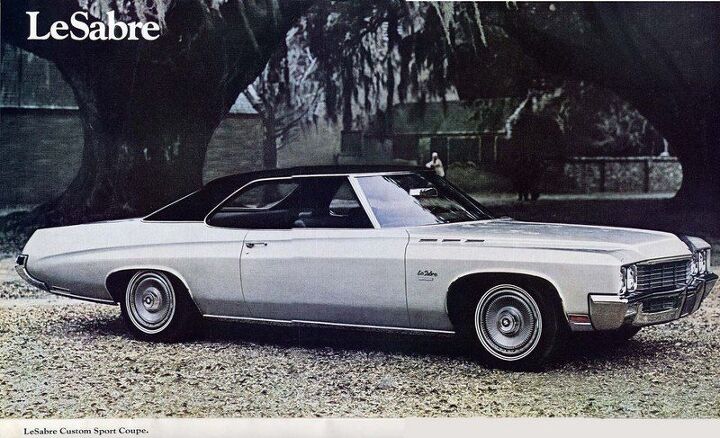






















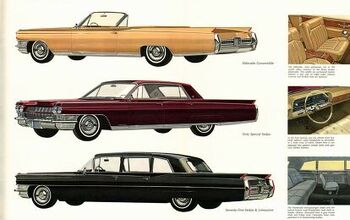
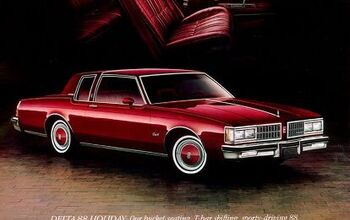
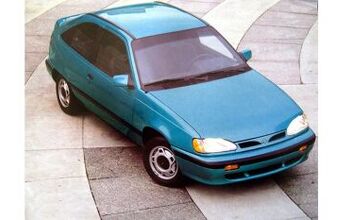
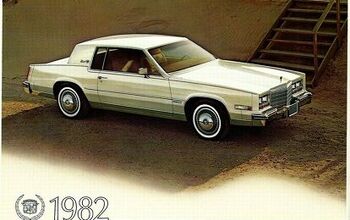











Comments
Join the conversation
I had a 79 Malibu with a 305 V8 and the TMH 200. I started hearing reports of how junk the transmission was so I traded the car in with just 50,000 miles. I decided not to wait and see if major transmission trouble would hit or not.
Ah, the infamous THM200. My mom bought a brand new '78 Chevy Malibu Classic 4-door in late December, 1977, replacing our '66 Rambler American 440 4-door (232 2-bbl with Borg-Warner automatic, factory air). The Malibu was equipped with the 305 2-bbl and THM200, plus a/c. Two-tone blue metallic, it was full Disco Era. Less than a year after she bought it (she rode the bus to work, and hardly drove the Malibu), the THM started screwing up, with jerky 1-2 upshifts, and lazy, flare-ridden 2-3 upshifts. It was in and out of the dealer's shop for the next several years, for fluid changes and minor tweaks. The dealer told her that it needed annual fluid and filter changes (huh?). Finally, in '85, I was driving it to DFW Airport, to pick her up (her first grandson had been born, in California), when suddenly it wouldn't go into third, unless I backed completely off the throttle. The (aluminum) internal case support had broken, a common failure. The fix was a swap to a rebuilt THM350, performed by a local shop. That required a new rear mount, moving the crossmember (it was bolted to the frame), adding a throttle kickdown cable and linkage part on the carb to attach it, a vacuum line to the modulator, and a revised driveshaft. All told, it was under $600, and solved all the problems. Oh, and she did get $500 from GM under the class action. It had tons of other recalls, from the c-clip axle shafts in the rear end (the "button" on the end of the shafts could break off, causing the wheel, drum and axle shaft to slide out), to the a/c condenser failures. We sold that car after she passed away in 2012, and it had only 72,000 miles put on it, in nearly 35 years.